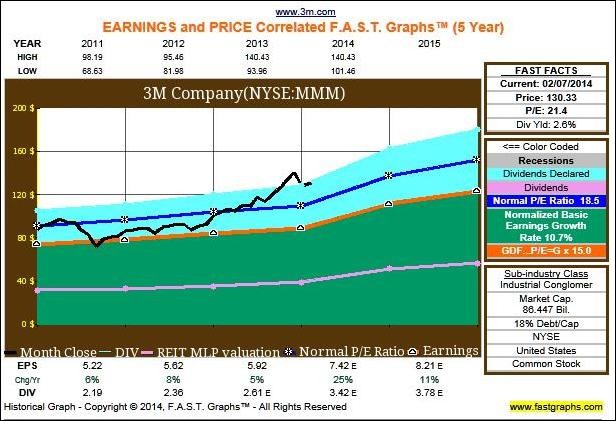Why Overvalued Stock ETFs Still Offer Opportunity
Post on: 16 Март, 2015 No Comment

Summary
- Myopia is responsible for yet another misleading forecast; that is, the investment houses all expect economic strength from here on out.
- Personal spending actually declined a seasonally adjusted 0.1% for the first time since January. Meanwhile, personal income rose the smallest amount in an entire year, just 0.2%.
- Although small-caps, consumer discretionary shares and pure-play industrials remain dicey, overvalued stocks still offer opportunity for those who hold too much in cash.
- I have stayed with the same barbell approach for all of 2014.
Let us recall that every significant economist and every major U.S. investment firm predicted interest rates would climb in 2014. The primary basis for the assessment? U.S. economic growth would accelerate and encourage the Federal Reserve to end ultra-easy monetary measures. Well, now that weve seen a so-called acceleration in the second quarter now that many have thoroughly dismissed the picking up of slack for first quarter economic contraction the same analysts are scrambling to explain why intermediate- and long-term bond yields keep right on falling. (Note: There were a few contrarians who anticipated that bond yields would fall .)

Today, myopia is responsible for yet another misleading forecast; that is, the investment houses all expect economic strength from here on out. The assessment is largely based upon the faulty premise that 200,000 low-paying and/or part-time positions per month is better than a sharp stick in the cornea. On the other hand, when the pace of working-aged adults leaving the workforce is much faster than the pace at which folks are entering it, when median family income is lower today than it was at the worst part of the recession in 2009, and when annualized GDP decelerates from 2012 to 2013 to 2014, perhaps group-think commentators would benefit from visits to their local optometrists.
Whats really going on? Consumers are getting squeezed. Personal spending actually declined a seasonally adjusted 0.1% for the first time since January. Meanwhile, personal income rose the smallest amount in an entire year, just 0.2%. That is not going to do very much for helping out inflation-adjusted family income.
Of course, in a world where bad news may be good news, this type of data suggests that the Federal Reserve may not be able to end its zero percent overnight lending rate campaign in mid-2015, or at any point next year. It follows that those who love central bank stimulus those with remarkably short memories simply do not fear the removal of the beloved punch bowl.
On the flip side, there are adverse implications for certain segments of the markets. Consumer discretionary stocks continue to exhibit relative market weakness. The SPDR Select Consumer Discretionary (NYSEARCA:XLY ):S&P 500 price ratio has bounced off its lows, yet continues to remind investors to rethink their allocation.
Although small-caps, consumer discretionary shares and pure-play industrials remain dicey, overvalued stocks still offer opportunity for those who hold too much in cash. Why? The Fed understands that headline unemployment numbers do not represent the true labor picture. Whats more, after 27 months, Chairwoman Yellen is still waiting for inflation indicators to hit a 2% target; that is, the Personal Consumption Expenditures (PCE) Price Index resides at a year-over-year 1.6%, offering the Fed plenty of reason to stick with its zero percent overnight lending rate approach. Do the Feds policies help employment? Debatable. Does it prop up gross domestic output? It has kept us at a sub-par 2% growth level for five-and-a-half years. Does it benefit riskier assets like stocks? Undoubtedly!
What can you buy? I have stayed with the same barbell approach for all of 2014. ETFs on the right side of the barbell include faves like iShares USA Minimum Volatility (NYSEARCA:USMV ), Vanguard High Dividend Yield (NYSEARCA:VYM ), SPDR Select Health Care (NYSEARCA:XLV ), First Trust Technology Dividend (NASDAQ:TDIV ) and iShares MSCI Asia excl Japan (NASDAQ:AAXJ ). ETFs on the left side of the barbell include Vanguard Extended Duration (NYSEARCA:EDV ), Vanguard Long-Term Bond (NYSEARCA:BLV ), PIMCO 15+ Year TIPS (NYSEARCA:LTPZ ) and SPDR Nuveen Muni (NYSEARCA:TFI ). I have very little exposure to the handle, other than UBS E-TRACS Alerian Energy Infrastructure (NYSEARCA:MLPI ) and held-to-maturity high yield vehicles in the Guggenheim BulletShares Series.
Click here for Gary’s latest podcast.
Disclosure: Gary Gordon, MS, CFP is the president of Pacific Park Financial, Inc. a Registered Investment Adviser with the SEC. Gary Gordon, Pacific Park Financial, Inc, and/or its clients may hold positions in the ETFs, mutual funds, and/or any investment asset mentioned above. The commentary does not constitute individualized investment advice. The opinions offered herein are not personalized recommendations to buy, sell or hold securities. At times, issuers of exchange-traded products compensate Pacific Park Financial, Inc. or its subsidiaries for advertising at the ETF Expert web site. ETF Expert content is created independently of any advertising relationships.














